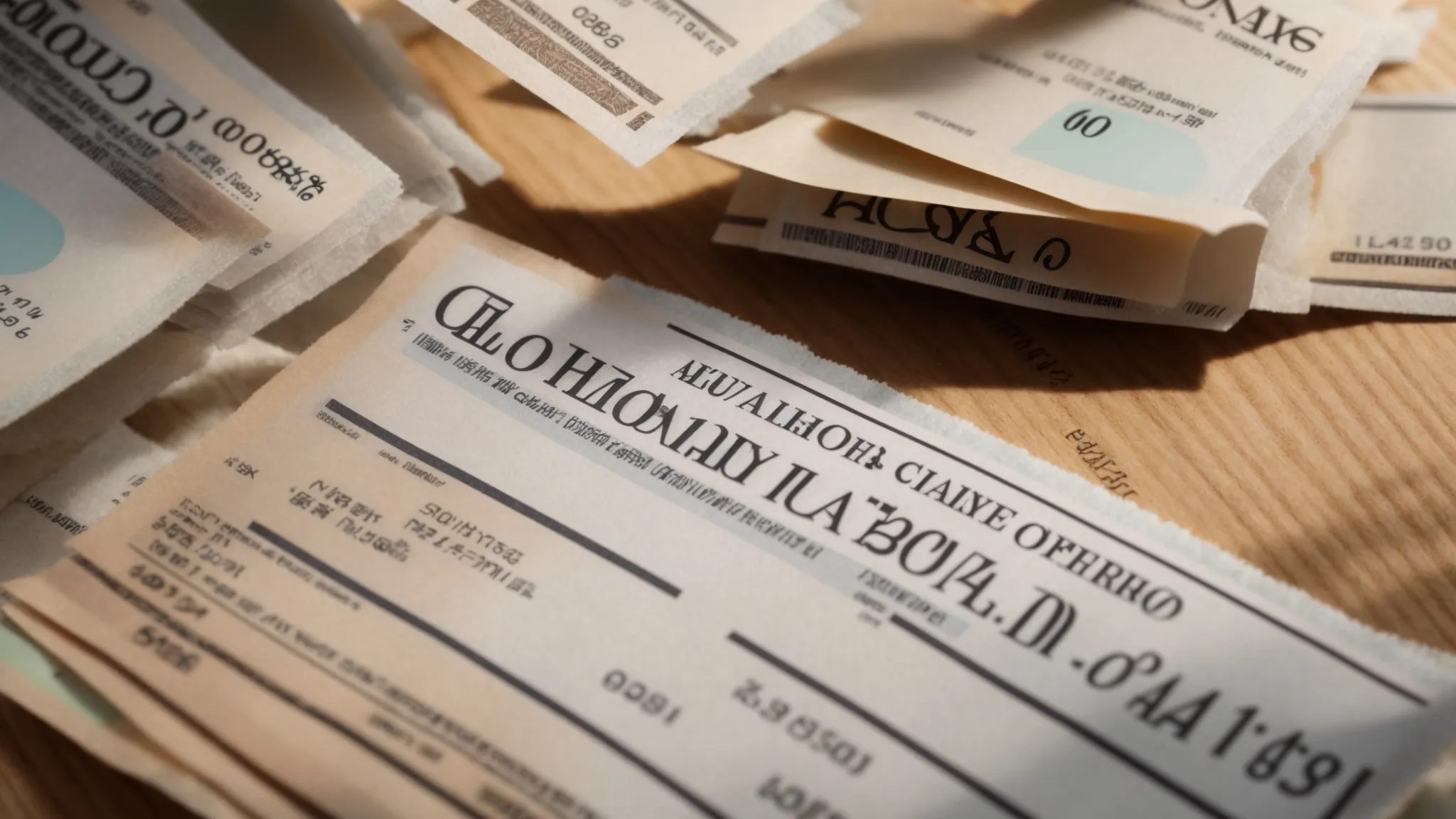When a cheque is lost, stolen, or written incorrectly, the thought of stopping payment can be stressful. What exactly does a stop payment on cheque request entail? This article will clarify how to request a stop payment and outline the fees and implications involved. Readers will gain insight into the processing timelines and answers to common questions surrounding this topic. By understanding these elements, business owners can navigate the process more confidently and protect their assets efficiently. This engaging guide aims to ease concerns and ensure that readers can make informed decisions regarding their online banking transactions.
What Is a Stop Payment on Cheque Request?

A stop payment on a cheque is a request made by a customer to prevent a cheque from being cashed or deposited. Customers may request a stop payment for various reasons, such as issues with vehicle insurance payments, payroll discrepancies, or concerns related to a line of credit. Understanding these circumstances helps address the key aspects of preventing unauthorized transactions and managing recurring deposits effectively.
Definition of Stop Payment on Cheque
A stop payment on a cheque refers to an instruction given by a customer to the bank, requesting that a specific cheque not be honored when presented for payment. This can occur for various reasons, including disputes regarding customs fees, errors in billing, or concerns about a bond transaction. By utilizing mobile app features, customers can quickly initiate a stop payment request, ensuring that funds are protected against unauthorized access.
This request allows individuals and businesses to manage their financial transactions more effectively, especially in cases involving fixed deposits or payroll discrepancies. For example, if a cheque representing a payroll error is issued, a stop payment can prevent it from being cashed, allowing the issuer to amend the record without financial loss. Overall, understanding the definition and implications of a stop payment on a cheque helps users navigate their financial responsibilities with greater confidence.
Why Customers Request Stop Payments
Customers often request a stop payment on a cheque to prevent unauthorized transactions or to rectify issues related to their finances. For instance, if a cheque linked to a mutual fund investment is lost or mistakenly issued, a stop payment can mitigate potential losses and safeguard the investor’s savings. Additionally, when discrepancies arise, such as with payroll or payments intending to contribute to the Atal Pension Yojana, customers seek to halt payment to allow for corrections and ensure proper financial management.
Another common reason for stop payment requests revolves around concerns with insurance or investment products, including the Pradhan Mantri Jeevan Jyoti Bima Yojana. If a cheque for premium payments is issued in error, it is vital to initiate a stop payment to avoid complications or unintended policy lapses. This level of proactive investment management helps individuals maintain control over their financial commitments and ensures that their funds are utilized effectively.
Now that the importance of a stop payment on a cheque is clear, it’s time to take action. Finding out how to request this can save you stress and money.
How to Request a Stop Payment on a Cheque

To effectively request a stop payment on a cheque, understanding the necessary steps is vital. Customers should be familiar with the information required for their request, including cheque details and account information. There are various methods to submit the stop payment request, whether through a bank’s mobile app, online banking, or in person. Each method is designed to help safeguard savings accounts and prevent fraud related to cash transactions, including those linked to programs like the Pradhan Mantri Suraksha Bima Yojana.
Steps to Initiate a Stop Payment Request
To initiate a stop payment request on a cheque, the customer must first gather essential information, including the cheque number, amount, and the bank account from which the funds are drawn. This information is crucial for the bank to process the request efficiently and ensure that the correct cheque is halted. Customers can use their bank’s mobile app or online banking platform, which often streamline the process, making it easy to manage transactions involving loans, remittances, or investment accounts like a demat account.
Once the relevant details are ready, customers should select their preferred method of submission. Whether done online or in person, it is important to confirm the bank’s policies, as some institutions may require additional verification depending on the type of account – such as a loan home loan or regular bank account. Quick action is vital; customers should initiate the stop payment request as soon as they notice any discrepancies to avoid unnecessary interest charges or complications with their financial obligations.
Information Required for the Request
When requesting a stop payment on a cheque, it is essential to gather specific information to facilitate the process. This includes the cheque number, the exact amount, and the account details from which the funds will be drawn. For instance, if an individual is managing payments related to an EMI or contributions to the national pension system, having these details on hand ensures the bank can swiftly halt any unauthorized transactions.
Additionally, users should consider utilizing mobile banking features for convenience. Many banks allow customers to initiate stop payment requests directly through their mobile banking app or online portal. Having a debit card handy can also simplify the verification process, particularly if there are any authentication steps required by the bank. By preparing this information in advance, individuals can effectively manage their financial commitments and mitigate any potential losses.
Methods for Submitting a Stop Payment Request
Customers can submit a stop payment request through various convenient channels. Many banks provide online banking platforms or mobile apps that allow individuals to initiate a stop payment quickly and easily, reducing the need for in-person visits. This is especially beneficial for those managing business loans or mortgage payments, as it eliminates potential fees associated with late payments or unauthorized transactions.
For those who prefer traditional methods, visiting a bank branch in person remains an option. This allows customers to discuss their situation directly with a representative, ensuring that all necessary details are correctly submitted. Whether interacting online or in person, providing accurate information about the cheque, including any related debt or credit card implications, is crucial for a successful stop payment process.
Stopping a cheque is just one part of the process. Next, it’s vital to look closely at the fees that come with such requests; understanding these can help you manage your finances better.
Understanding the Fees Associated With Stop Payment Requests

Stop payment requests often incur typical costs that vary by financial institution. Understanding these fees is essential, especially when managing services like health insurance or a credit card bill. Additionally, individuals should be aware of the possibility of refunds or adjustments related to their stop payment actions. This section will provide insights into the financial implications of stop payments, aiding in effective wealth management.
Typical Costs Incurred
When requesting a stop payment on a cheque, customers should be aware of the typical costs incurred. Financial institutions often charge a fee for processing a stop payment request, which can range from a nominal fee to higher amounts depending on the bank’s policies. Understanding these charges is vital for effective financial planning, as these costs can impact overall budgeting, especially for businesses managing regular payments, such as payroll or vendor transactions.
In some cases, banks may offer different pricing structures, such as lower rates for customers with premium accounts. Customers who frequently engage in transactions that require stop payments may want to consider these options to minimize their expenses. Being informed about these fees allows individuals to make cost-effective decisions that align with their overall financial management strategies.
Potential Refunds and Adjustments
When a stop payment request is initiated, customers may be eligible for potential refunds or adjustments based on the financial institution’s policies. Banks often have specific guidelines regarding the refundable fees associated with stop payments, especially if the cheque was never cashed or deposited. Understanding these policies can assist customers in recovering some costs incurred during the stop payment process.
In certain cases, if a stop payment is processed and the cheque is later found to be valid and not wrongfully issued, customers might experience adjustments to their accounts. This can include reversing transaction fees or crediting amounts back to their balance. Being informed about these possibilities not only aids in financial management but also encourages proactive engagement with the bank for clarification on specific terms and conditions regarding refunds or adjustments related to stop payments.
Stopping a cheque carries more than just a fee; it shapes trust and responsibility in business. Understanding how this decision affects your finances is crucial and can change the way you handle payments.
Implications of Stop Payment on Cheques

Stop payment requests can have significant implications for both the payee and the issuer. For the payee, this action may lead to delays in receiving funds and potential disputes over payment. Moreover, it can impact the banking relationship of the issuer, influencing how future transactions or credit applications are handled. Understanding these effects is crucial for effective financial management.
Effects on the Payee
The effects on the payee when a stop payment is initiated can be quite significant. A payee may experience delays in receiving funds that were expected, leading to cash flow issues. This is especially true for vendors and service providers who rely on timely payments to manage their financial responsibilities, such as payroll or inventory procurement.
Moreover, a stop payment request can create confusion or disputes between the payee and the issuer. If the payee was unaware of the stop payment, they might face challenges when trying to deposit the cheque, including having to address the situation with the issuer directly. This adds additional stress to their financial operations and highlights the need for clear communication regarding any payment issues.
Impact on Your Banking Relationship
When a stop payment is initiated, it can affect the banking relationship of the issuer. Financial institutions may closely monitor accounts with frequent stop payment requests, leading to potential scrutiny or even a review of the individual’s overall banking activities. This can result in changes to service levels or an increased risk of higher fees if the bank perceives a pattern of financial mismanagement.
Additionally, maintaining clear communication with the bank is vital after a stop payment request. If customers fail to inform their bank about the reasons for stopping a payment, it may lead to misunderstandings that could damage the relationship. By being proactive and transparent in their dealings, customers can foster a healthier banking relationship, ensuring better support for their future financial needs and transactions.
Stopping a cheque can have serious consequences. Understanding the time frames for processing these requests is essential for smoother transactions and avoiding potential mishaps.
Time Frames for Processing Stop Payment Requests
Processing times for stop payment requests can vary, depending on several factors. Customers will benefit from understanding how long it typically takes for a request to be processed and which aspects may influence these timelines. This section will detail the expected duration of stop payment processing and the various factors that can affect it, helping customers manage their financial transactions more effectively.
How Long Does It Take?
The processing time for a stop payment request typically ranges from one to three business days. Factors such as the bank’s specific procedures, the method of request submission, and the volume of transactions at the time can influence this timeline. Customers looking to stop a cheque should initiate the request as soon as they notice any issues to minimize delays and protect their funds effectively.
Factors Affecting Processing Times
Several factors can influence the processing times for stop payment requests. One of the primary elements is the specific policies of the financial institution, as each bank may have varying procedures that affect how quickly a request can be actioned. Additionally, the method through which the request is submitted—whether via a mobile banking app, online platform, or in person—can impact the speed of processing. For example, requests made through digital channels often receive quicker attention compared to those submitted at a physical branch.
The volume of transactions being handled by the bank at the time of the request can also play a significant role. High transaction volumes may lead to longer wait times for processing due to increased workloads in the bank’s operations department. Customers who initiate stop payments promptly upon noticing discrepancies enhance the likelihood of quick resolutions, thereby protecting their funds efficiently. Understanding these factors helps individuals manage their financial transactions more effectively and maintain control over their accounts.
Understanding how long a stop payment request takes can ease your mind. Next, let’s tackle the common questions that often arise about this important process.
Reviewing Common Questions Related to Stop Payment Requests
This section addresses key concerns related to stop payment requests. It explains what occurs if a cheque is cashed despite a stop payment request, how to cancel such a request if needed, and the legal aspects surrounding stop payments on cheques. Each topic provides practical insights to help individuals manage their financial responsibilities effectively.
What Happens if the Cheque Is Cashed?
If a cheque is cashed despite a stop payment request, the consequences can be significant for the issuer. The bank must still honor the cheque if they processed it before the stop payment was completed. This situation can lead to the issuer facing unexpected overdraft fees or other financial repercussions, which emphasizes the importance of prompt action when discrepancies arise.
In such cases, the issuer should immediately contact their bank to report the issue. They may need to provide documentation regarding the stop payment request to initiate an investigation. Understanding bank policies regarding disputes can aid in resolving the matter effectively and potentially recovering lost funds, highlighting the necessity for clear communication with financial institutions regarding cheque transactions.
How to Cancel a Stop Payment Request
To cancel a stop payment request, the customer must contact their bank as soon as possible. Each financial institution has its own process, so it’s essential to provide the necessary details, such as the cheque number and account information, to ensure accurate processing. Quick communication with the bank allows for efficient cancellation, minimizing any potential confusion related to the transaction.
Customers can usually cancel a stop payment request through their mobile banking app, online banking portal, or by visiting a bank branch in person. Some banks may also require written confirmation to finalize the cancellation, emphasizing the need for clear documentation. Understanding these steps helps customers maintain control over their finances and manage any resulting implications effectively.
Legal Aspects of Stop Payment on Cheques
The legal aspects of stop payment on cheques involve the obligations and rights of both the drawer and the bank. When a customer issues a stop payment request, they hold the responsibility to ensure that the request is made in a timely manner, ideally before the cheque is presented for payment. Failure to do so can result in potential legal ramifications, such as being liable for any ensuing financial disputes or overdraft fees associated with the cashed cheque, emphasizing the importance of prompt communication with the bank.
Additionally, financial institutions are required to adhere to specific regulations surrounding stop payments. Though most banks will honor a valid stop payment request, they are not legally bound to do so if the request was not properly submitted or if the cheque has already been processed. Customers must understand that there may be limitations on the duration of a stop payment, typically ranging from six months to a year, after which the request may need to be renewed, ensuring their financial affairs remain secure and well-managed.

